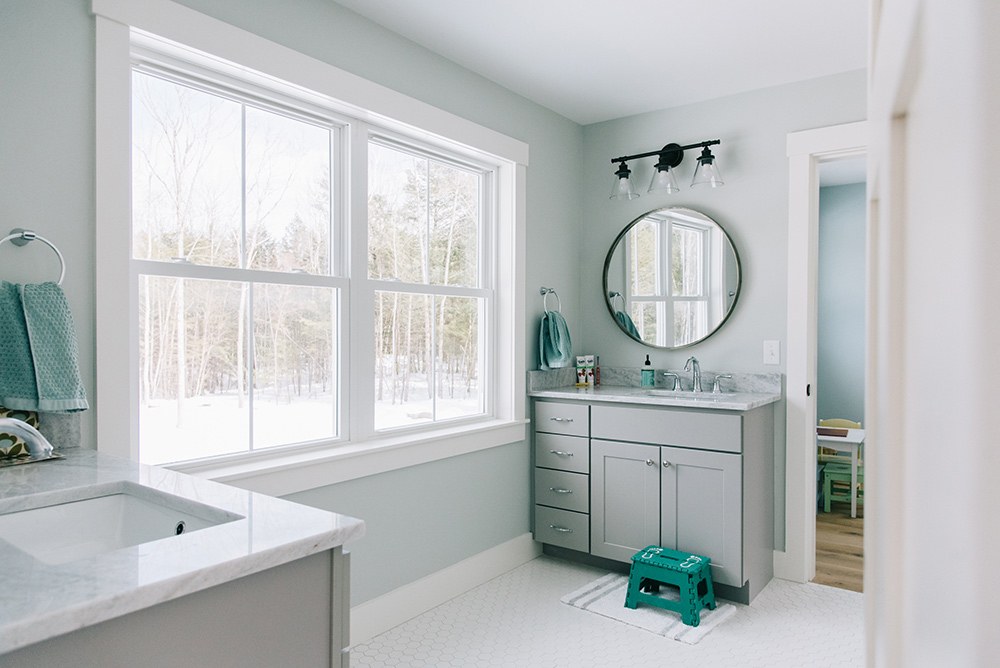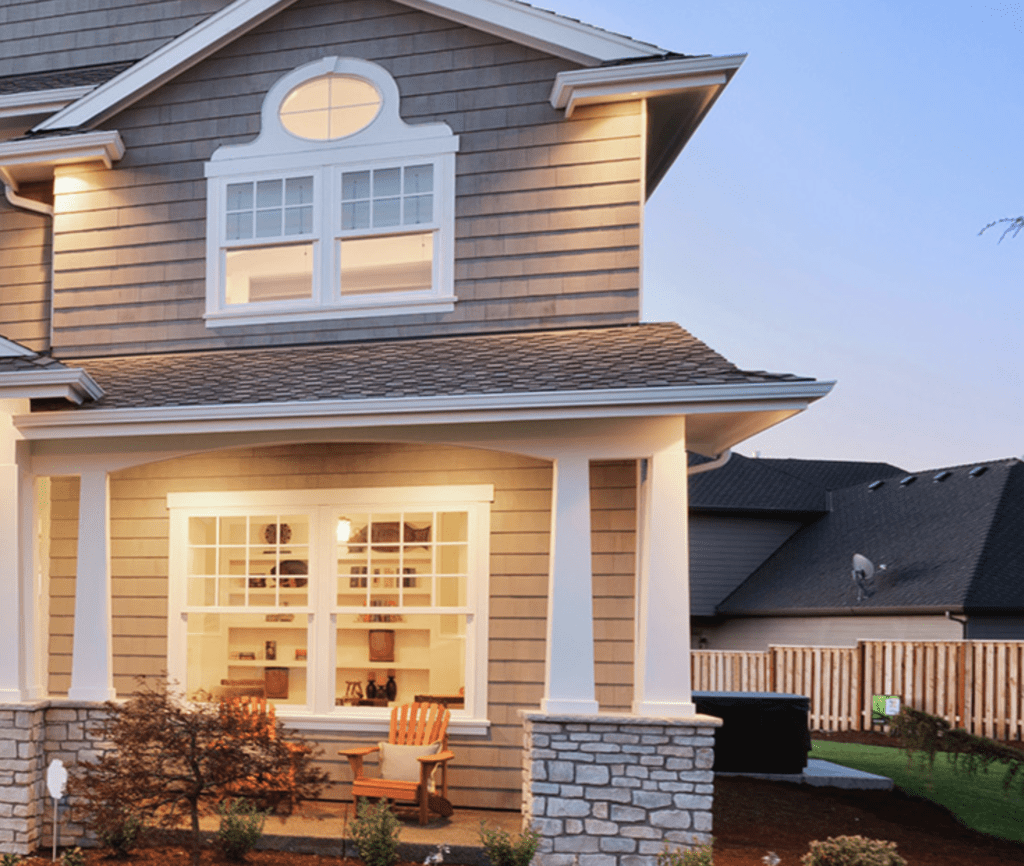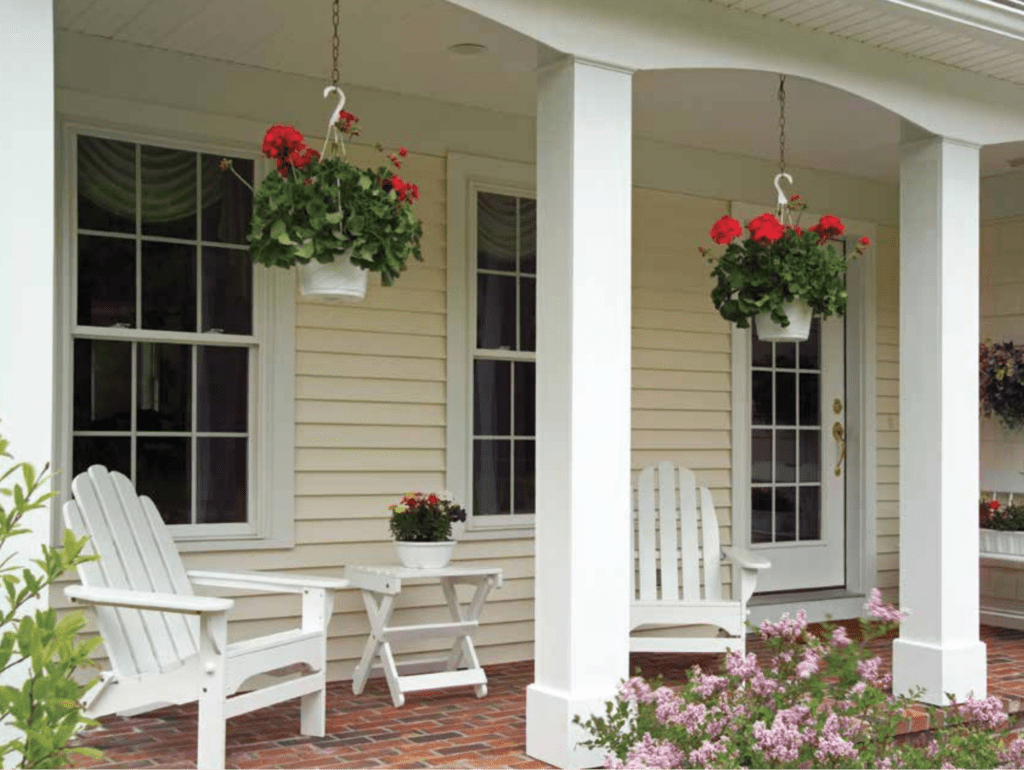
Struggling to determine what type of window material (specific to frame and parts) makes the most sense for you? With more options on the market, than ever before, it can seem like a cumbersome decision. In the past, wood was the predominant option, but that’s not the case anymore.
These days, vinyl and aluminum materials have emerged as two front-running options for windows and doors.
In a battle between vinyl vs. aluminum windows, which comes out on top? Let’s compare these two window materials so you can decide which is the best choice for your project.
Vinyl vs. Aluminum Windows: 6 Things to Consider

Vinyl and aluminum window material for frames and sashes both have pros and cons. In general, they’re lower-maintenance, cheaper and more durable than wood. They both have different aesthetic options and are used in residential and commercial properties.
However, when you focus on the right areas, it’s much easier to compare vinyl windows to aluminum windows.
These six areas are where the biggest differences between the two materials emerge and where you’ll most likely find the information you need to decide which is right for your project.
1. Appearance
When it comes to vinyl window frames vs. aluminum frames, there are many similarities on paper. Both offer a wide range of colors and finishes and are readily available in nearly any window configuration you could need (i.e. single-hung, double-hung, single-pane, multi-pane, etc.).
However, off-paper and in real life, these two frame material options look quite different.
Aluminum windows are generally thin-framed, so most of the window is the glass pane. On the other hand, vinyl windows usually mimic traditional window frame features, though they come in a wide variety of colors and finishes so you can get a traditional style with a modern color.
If a conventional wood-grain look is what you’re after, vinyl is a clear winner. While aluminum windows can be coated to look like wood, they don’t quite achieve the realistic look that vinyl can.
2. Durability
Both options are pretty durable, especially when compared to conventional wood frames and sashes.
Aluminum tends to visibly chip or dent. In other words, if an aluminum window frame or sash gets damaged, you’re going to see it. If vinyl window frames or sashes are damaged in the same way, you’re unlikely to see the chips or dents because the materials are consistent throughout.
Aluminum also faces corrosion and fading, whereas vinyl doesn’t. However, aluminum is the stronger window material option of the two. It has a higher impact ratio and can withstand every climate out there. Vinyl windows can hack it in most weather conditions but might not fare as well as aluminum windows in extreme heat or cold or in areas where the climate fluctuates dramatically.
3. Ongoing Maintenance
Vinyl windows are virtually maintenance-free when they’re installed properly.
Aluminum windows are low maintenance, but they do require regular upkeep. Aluminum is prone to condensation, and extra moisture leads to rust and mold.
For that reason, aluminum windows need to be cleaned with an aluminum cleaner regularly. It’s also essential to keep the moving parts lubricated because aluminum windows tend to corrode and rust over time.
4. Energy-Efficiency
Vinyl windows are the way to go If energy-efficiency and insulation are priorities for your project. Energy-efficiency is one of the primary advantages of vinyl frames and sashes. They’re incredibly effective at reducing heat transfer and light penetration and regulating a room’s internal temperature.
Alternatively, aluminum frames and sashes can actually conduct heat and warm up a room. Some thermally improved aluminum materials can help with energy loss, but they tend to cost quite a bit more.
5. Cost
The cost of new windows is typically one of the most important aspects that a home or building owner cares about. So which material is more affordable?
Vinyl windows cost significantly less than aluminum windows. On average, they cost between 33-58% less. Manufacturer, quality and additional features can all contribute to cost variations. However, when it comes to aluminum vs. vinyl window prices, vinyl wins by a landslide.
6. Installation
Both vinyl and aluminum windows should be installed by a professional. The avid-DIYer can do it themselves, but they risk making some installation errors that diminish the advantages of the windows.
Vinyl is easier to install due to its flexibility. It tends to contract and expand and be much simpler to work with.
Aluminum isn’t flexible at all. If the window’s fit is off by even a fraction of an inch, the window won’t install properly. Aluminum’s inflexibility usually leads to a much more tedious and time-consuming installation process for professionals.
Are Vinyl or Aluminum Windows Right for My Project?

So, which is better, vinyl or aluminum windows? Head-to-head, vinyl is the clear frontrunner in most categories.
Vinyl windows are easier to install. They’re also lower cost and require less maintenance than aluminum windows. Additionally, vinyl windows are energy-efficient and offer a more substantial range of aesthetic and design options.
If you’re looking for cost-effective, energy-efficient, durable, low-maintenance windows with an impressive variety of styles, sizes, colors and finishes — you can’t go wrong with vinyl windows.
Contact the vinyl window experts at Paradigm today for more information on quotes, materials, warranties and more.
